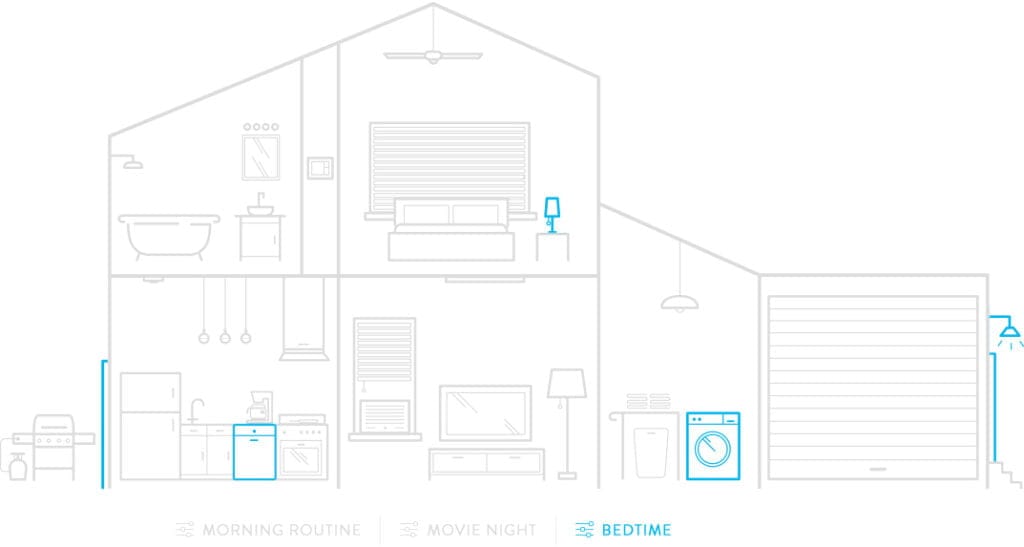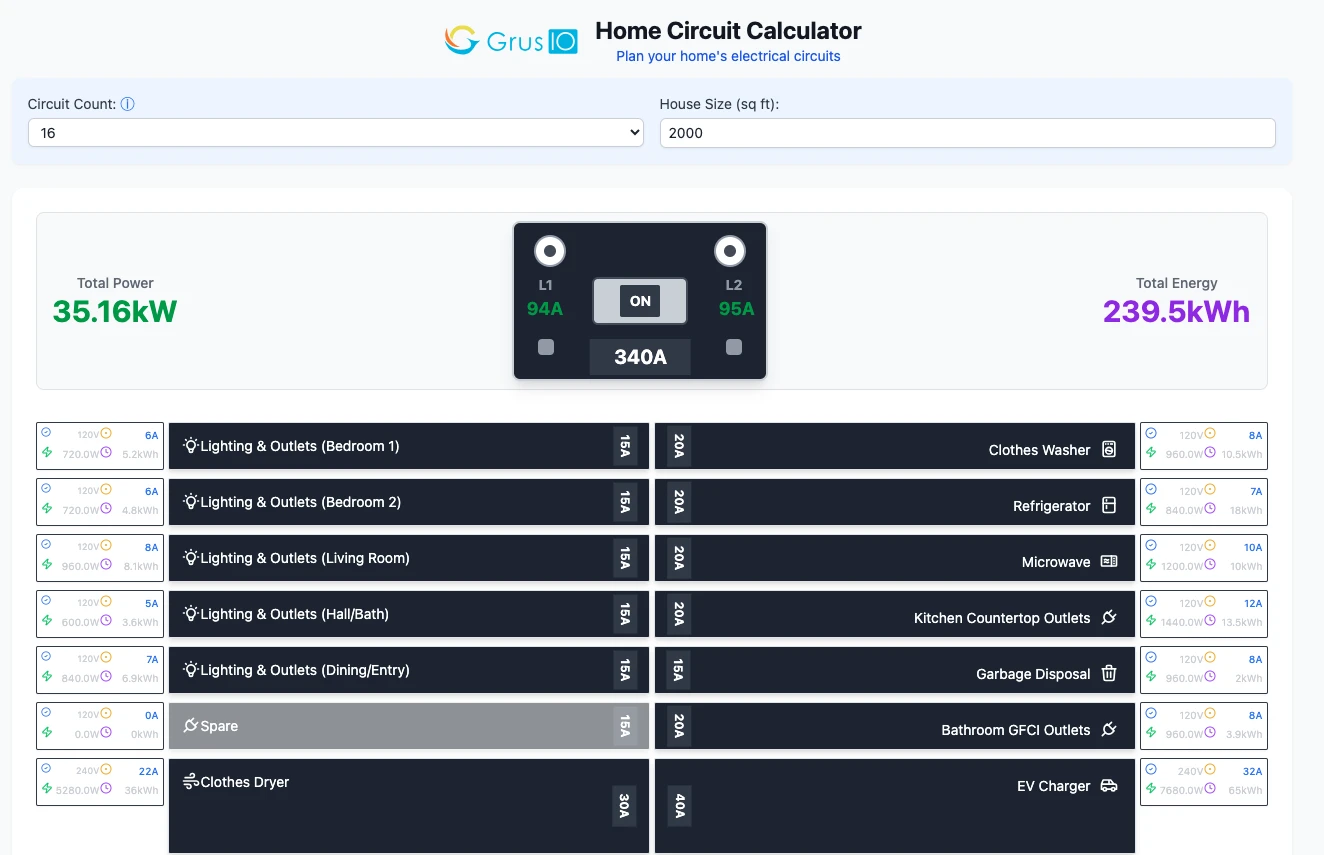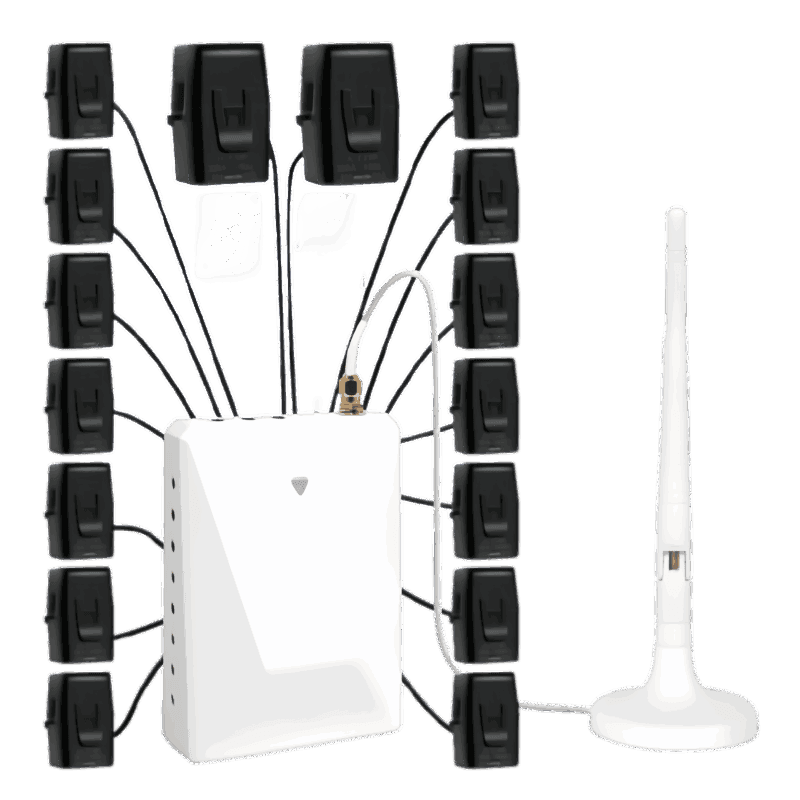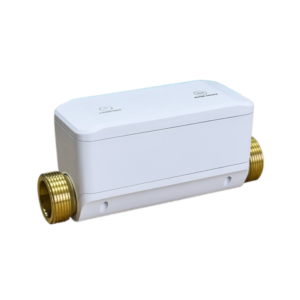Ever had a month where your electricity bill didn’t match your lifestyle? Maybe you used less heat, had no guests, and the weather was mild—yet your bill shot up. Or perhaps you’ve added solar panels or a new EV charger and want to see exactly how much power you’re producing and using.
These are the moments when energy monitoring systems make all the difference. They track your electricity in real time, help you find hidden waste, protect your appliances, and even integrate with your smart home setup for automated control.
1. Your Electricity Bill Doesn’t Make Sense
You expect your bill to go up when you run the AC all summer or decorate with holiday lights. But when it jumps for no obvious reason, it’s usually a sign something is quietly draining power. Sometimes it’s a single appliance that runs longer than it should; other times it’s a “vampire load” pulling electricity 24/7.
Real-life scenario: One homeowner noticed a small but constant draw on their panel even when the house was “off” for the weekend. With a home energy monitor, they traced it to a faulty garage fridge that was cycling almost non-stop because the door seal had failed. The fridge was costing them $15–$20 a month—almost half its original value each year.

For North American households, the Split-Phase Home Energy Monitor can watch every circuit in your panel. If you only need to keep an eye on one line, the Single-Phase Electric Meter is a quick, reliable choice.
2. You Want to Verify and Track in Real Time
Waiting for a monthly bill to understand your energy use is like checking your bank balance after all the charges have cleared—too late to do anything about it. Real-time monitoring gives you the power to catch problems immediately.
Real-life scenario: A family installed solar panels and expected their grid usage to drop. But their bills barely changed. With real time energy monitoring, they spotted that their pool pump was still running during peak hours when solar production dipped. They adjusted the pump’s schedule and instantly saw a $40 monthly reduction.
Whether you’re checking that your electric company is billing you accurately or simply want to see how much your home is using at any given moment, real time energy monitoring is essential. The Multi-Circuit Energy Monitor and Three-Phase Smart Electric Meter give you instant updates, so you can spot unusual spikes and act before they hit your bill.
The U.S. Department of Energy’s guide on home energy management offers practical tips for tracking and reducing your consumption.
3. You’re Adding Solar or High-Load Devices
When you install solar panels, an EV charger, or a heat pump, your home’s power profile changes dramatically. You’re not just using electricity—you might be generating it, too. To get the most from your investment, you need accurate data on both production and consumption.
Real-life scenario: After installing an EV charger, one user thought their overnight charging was cheap thanks to off-peak rates. Their monitor revealed the charger’s standby mode was pulling power all day, adding $8–$10 a month in waste. A quick change to a smart plug fixed the problem.
Our Solar Energy Management System combines solar output with your household usage, giving you a full picture. And before adding any major appliance, the Home Electrical Calculator can help ensure your panel can handle the extra load.
4. You Want Seamless Smart Home Integration
For smart home owners, data is only half the story—it’s what you can do with it that matters. An energy monitor that works with platforms like Home Assistant, Alexa, or Google Home can trigger automations that make your home more efficient without any extra effort.
Real-life scenario: A tech-savvy homeowner linked their monitor to Home Assistant so that if total load exceeded 8 kW, the system would automatically pause the dryer and turn off the electric heater in the garage. They called it “automatic load shedding” and said it cut winter peak bills by almost 20%—without anyone in the family even noticing.
With smart home energy management, your monitor becomes the brain behind your home’s efficiency strategy. Explore more ideas in our Home Energy Efficiency Guide.
5. You Need to Monitor Device Health and Safety
Energy monitors aren’t just for cutting costs—they’re also early warning systems for potential problems. If your well pump starts running non-stop, it could mean a leak. If your dishwasher uses more power than usual, it might be stuck in a cycle. Spotting these patterns early can save you from costly repairs or water damage.
Real-life scenario: One homeowner noticed a sudden 24/7 draw on their pump circuit. They found a small but constant leak in their irrigation system, which could have run for months undetected. Fixing it saved both electricity and hundreds of gallons of water each week.
By tracking home energy usage for individual circuits and appliances, you’ll notice abnormal activity right away. Our guide on How to Choose the Best Smart Energy Monitor for Your Home in 2025 covers how to choose a system with this capability.
6. You Suspect Electricity Theft
While rare, electricity theft does happen. It could be a wiring error feeding power to another property, or an intentional connection made without your knowledge.
Real-life scenario: A homeowner in a multi-unit building noticed their “base load” doubled after a neighbor’s renovation. Their monitor revealed a new circuit pulling power during hours when they were away. The utility confirmed a wiring mix-up, and the charges were reversed.

With detailed data from an energy monitoring system, you can compare your expected usage against actual consumption and quickly spot discrepancies. If the numbers don’t match, it’s time to investigate.
FAQ
What are energy monitoring systems and how do they work?
They measure your home’s electricity use in real time, showing both overall and circuit-level data so you can identify waste and improve efficiency.
Is a home energy monitor worth the investment?
Yes—most homeowners recover the cost through reduced bills and avoided repairs within a year or two.
How can real time energy monitoring save money?
It lets you act on sudden usage spikes immediately, preventing costly surprises at the end of the month.
What’s included in smart home energy management?
Integration with automation platforms, remote access, and the ability to control loads based on your usage data.
What’s the best way to track home energy usage?
Choose a system that provides both whole-home and circuit-level monitoring for a complete picture.
How do I detect electricity theft at home?
Track your baseline usage and watch for unexplained increases—especially when no one is home or major appliances are off.
Conclusion
From bills that don’t make sense to planning for new solar panels, energy monitoring systems give you the insight you need to take control of your home’s power. They help you save money, protect your equipment, and even automate your efficiency.





